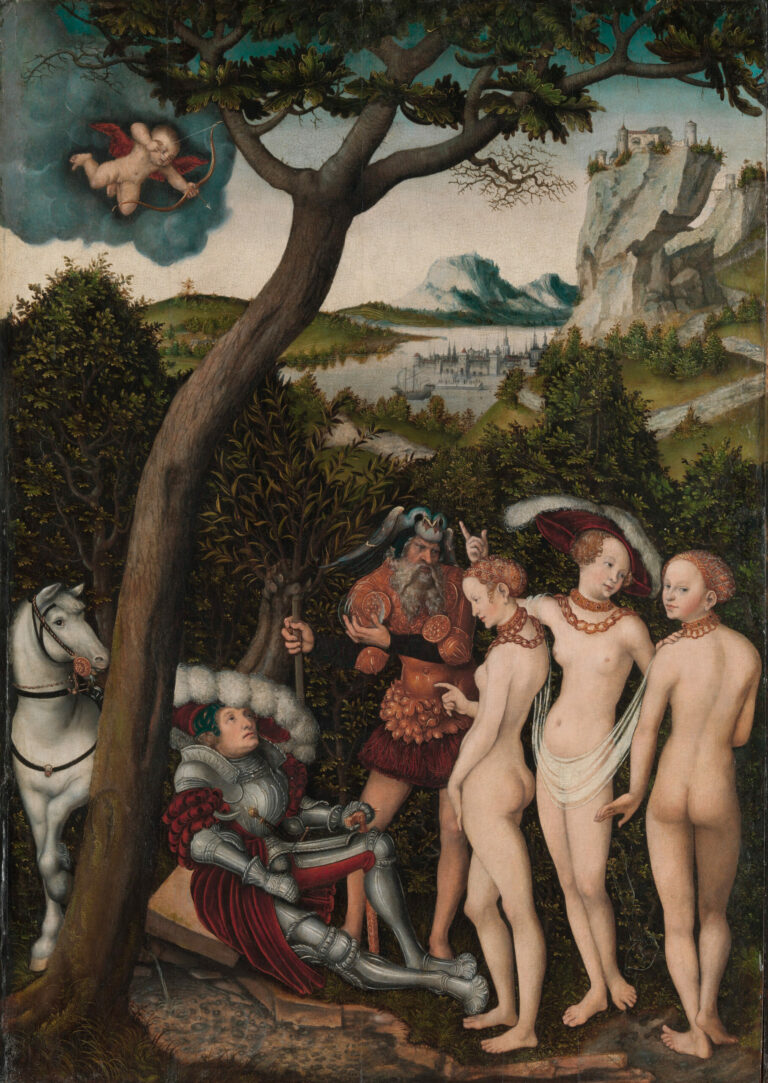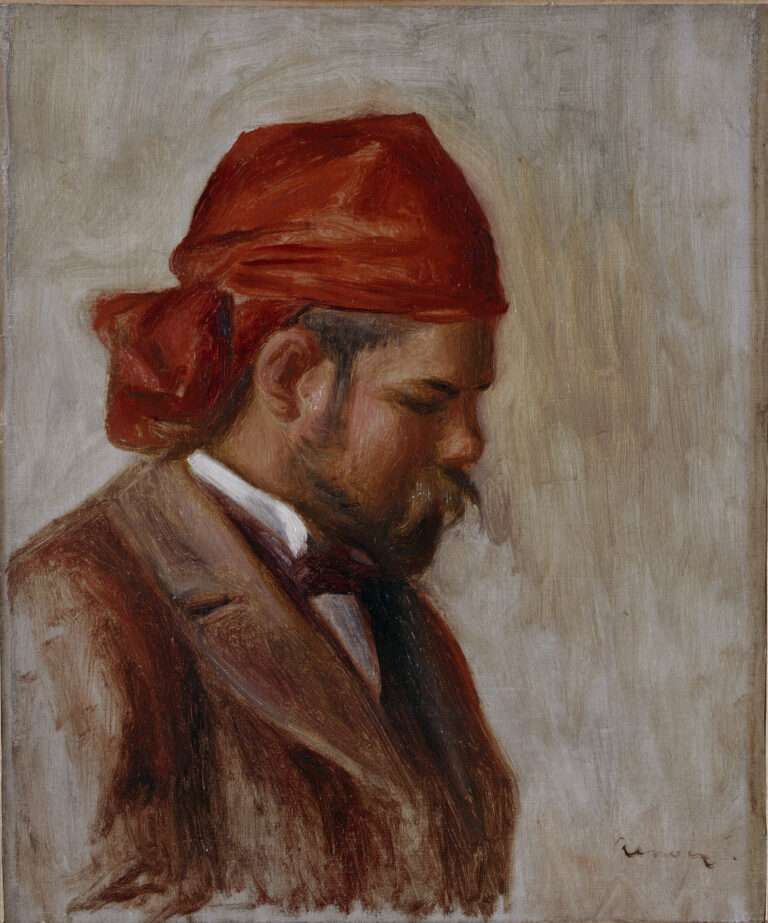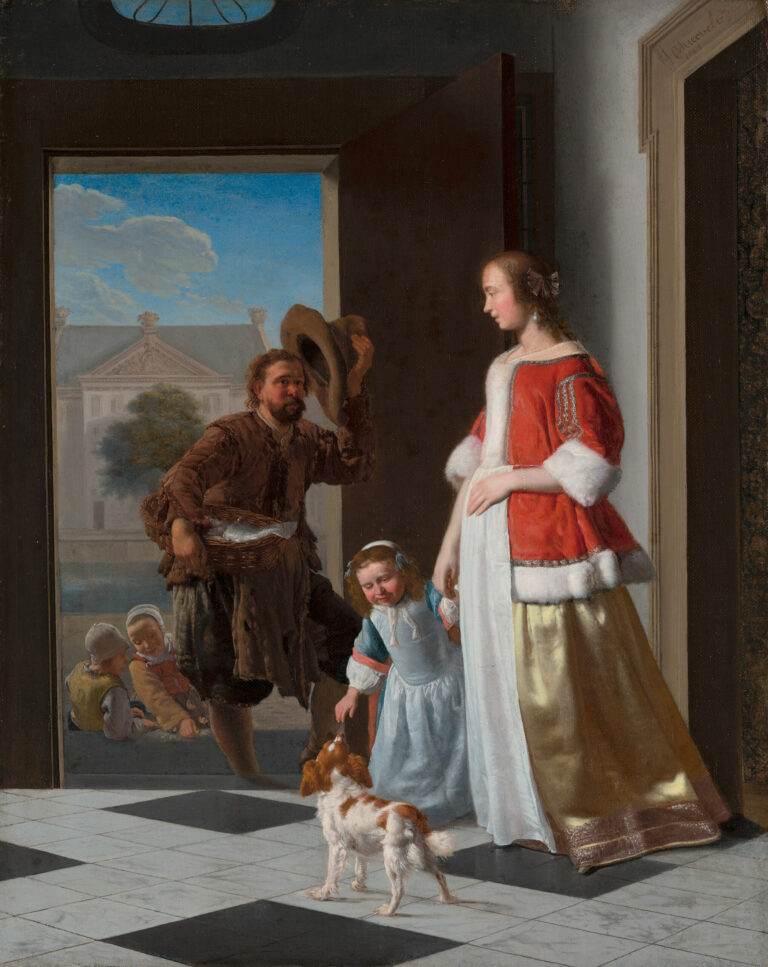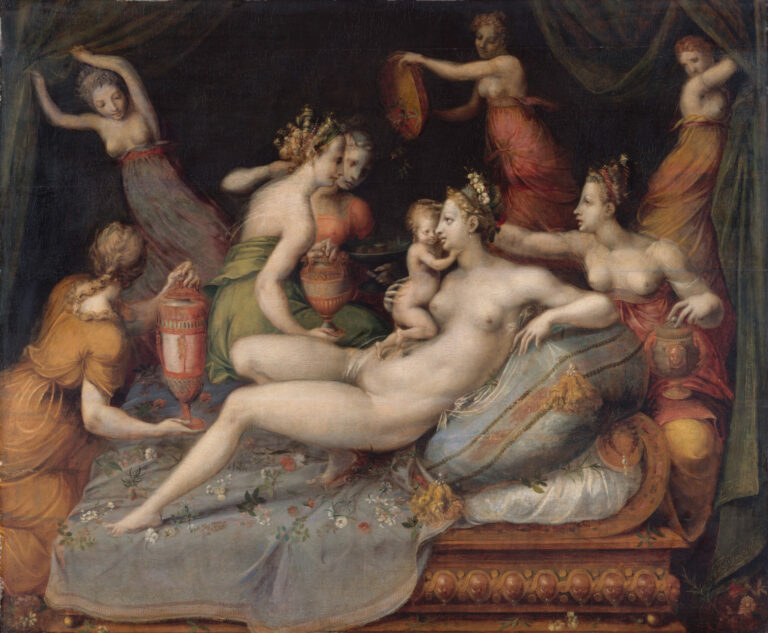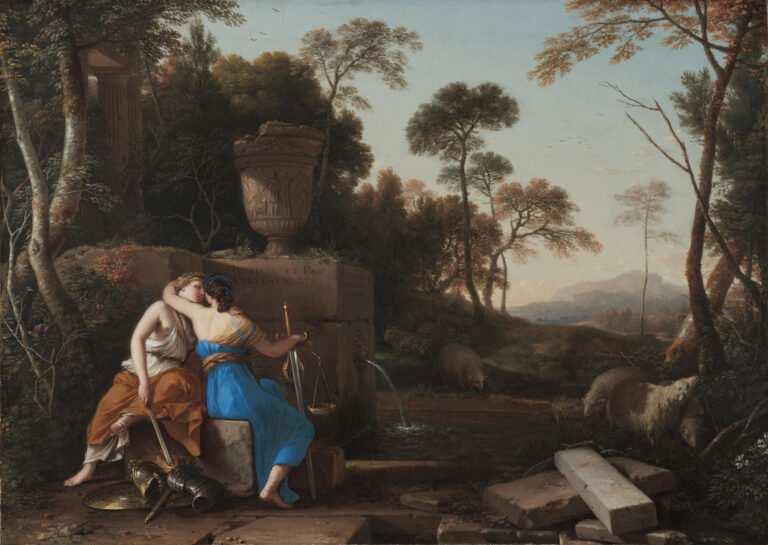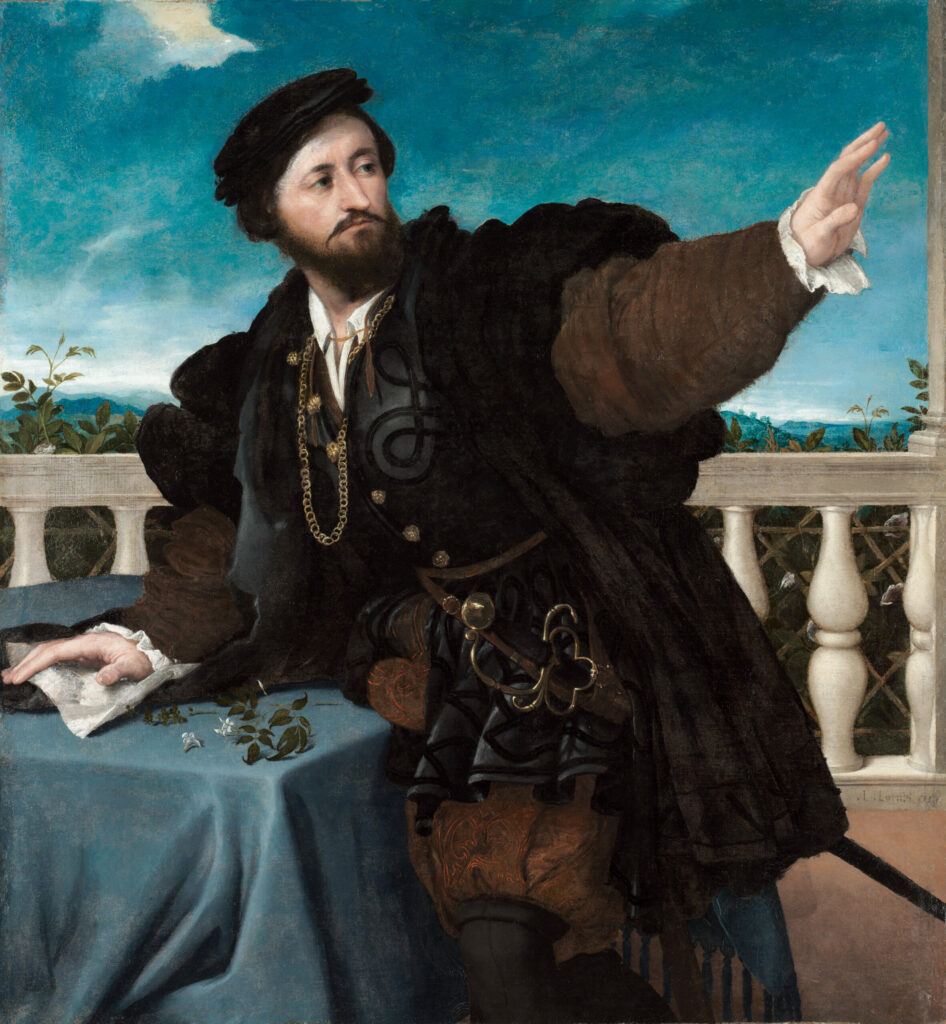
Here is a captivating portrait from the Venetian Renaissance. Lotto presents us with a masterpiece of psychological insight where every detail resonates with refined symbolism.
This figure with his theatrical gesture perfectly embodies the Bergamasque master’s art of revealing his subjects’ inner lives. His elegant black costume enhanced with goldwork and the silken beret that crowns his thoughtful brow proclaim his social standing. Upon this blue-draped table, clover and jasmine compose a floral language of exquisite poetry: promises of love, wishes for conjugal happiness. The manuscript document his hand caresses so tenderly—letter or architectural project?—adds to the mystery of this composition. Here Lotto transcends the simple official commission to reveal a being of flesh and emotion.
Further Information
- Portrait of a Man, possibly Girolamo Rosati, c. 1533–1534, by Lorenzo Lotto
- 108.2 x 100.5 cm (42 5/8 x 39 9/16 in.)
- The Cleveland Museum of Art, displayed in Gallery 118 Italian Renaissance
- https://www.clevelandart.org/art/1950.250
Lorenzo Lotto (c. 1480-1557) was a Venetian painter who remains one of the most fascinating and lesser-known figures of the Italian Renaissance. Born in Bergamo around 1480, he trained in Giovanni Bellini’s workshop in Venice before developing a distinctly personal style of striking modernity that blended Northern influences with Venetian tradition. Unlike his contemporaries Giorgione and Titian, Lotto favored introspection over decorative grandeur, revealing the soul rather than social rank. His itinerant career took him from Treviso to the Marche region, where he painted for bourgeois and ecclesiastical patrons, developing a psychological naturalism. His altarpieces of striking expressiveness and portraits of great humanity reflect a tormented sensibility that anticipates Baroque art. Misunderstood in his lifetime, this solitary genius found refuge at the sanctuary of Loreto, where he ended his days in obscurity.

